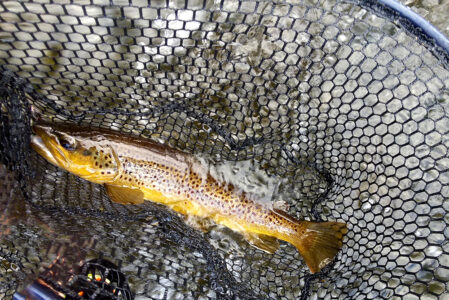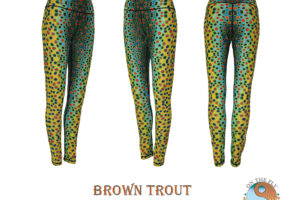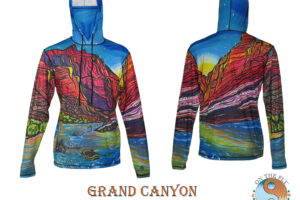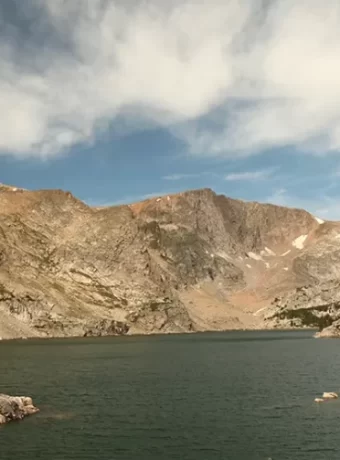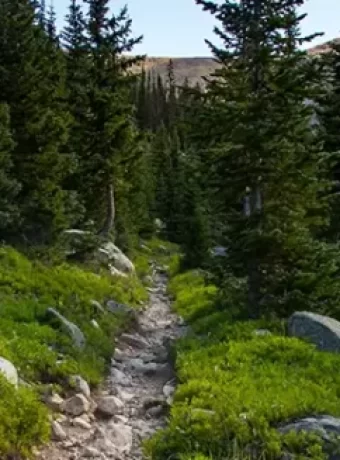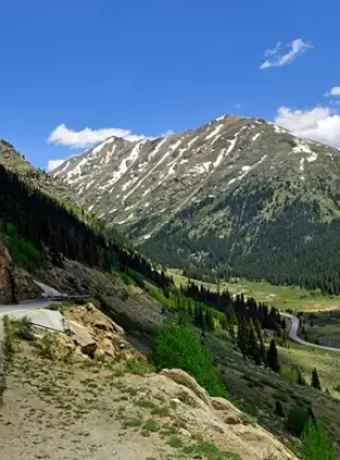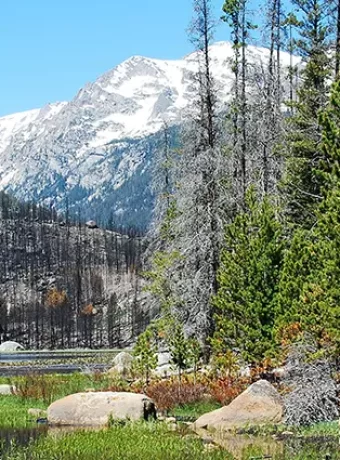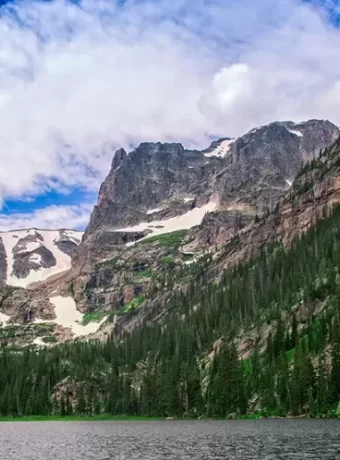Fly Fishing Montana’s Gallatin River Walk Wade or Float
Fly Fish Gallatin River a beautiful freestone river who’s headwaters lie in Yellowstone National Park. Originating at Gallatin Lake in the Gallatin Mountain Range, the river flows for approximately 25 miles inside of Yellowstone National Park’s boundary. As the river exits the park boundary, it is paralleled by U.S. Highway 191 and continues so until the river reaches Four Corners, MT. Additionally the Gallatin is surrounded by public land as it exits YNP, which combined with the proximity to U.S. Highway 191, provides excellent access and opportunities for fly fishing. Throughout the river’s 115 mile journey from its headwaters to the Missouri River, the Gallatin flows through many different beautiful sceneries and has many stretches that exhibit their own characteristics.
Yellowstone Park to Big Sky
The upper stretch of river at the boundary of YNP is in a relatively wide (for the Gallatin) valley. The river flows primarily over cobble stone of varying size which creates lots of riffle water broken up by current seams across the river with the occasional mid river features. There are a few runs that flow into pools, but most of the water is characterized by a shallow profile as it meanders its way through the valley. As you leave the park boundary, just downstream is a tributary named the Taylor Fork that flows into the Gallatin, (side note if it rains everything downstream from this creek is very muddy.) and the valley narrows into a heavily wooded canyon. As the rivers gradation steepens into the canyon it begins to pick some speed in areas along with more boulders and larger stones that it flows over, though many sections are still predominately cobble stone. Deeper holes can be found throughout this section of the Gallatin as well. As the river flows into the town of Big Sky, the canyon opens up into a valley where the Gallatin flows through meadows with willow covered banks. In this section the West Fork of the Gallatin comes in. Fun ultra-light fly fishing to Ousel Falls.
Gallatin Canyon, Downstream from Big Sky
As quickly as it begins it changes back to canyon Just downstream of Big Sky the river again flows through a tight heavily wooded canyon. From here to the mouth of the lower canyon just above Gallatin Gateway has a mix of water ranging from riffled runs, deep pools, pocket water, and whitewater. Wading can be easy in some areas with the cobbles mentioned in the upper stretches, but very difficult in others with large boulders and abrupt drop offs in others.
At the mouth of the Upper Gallatin Canyon, downstream from Big Sky, the river begins to flow through private lands. In this section of river there are multiple access sites that have convenient and favorable water to fish. Once the river finally makes its way through the canyon it opens up into Gallatin Valley. This is the section that does flow through a lot of private land, but again there are multiple access sites and everything below the high water mark on the river is public which does provide good fly fishing accessibility. The river is broader through here and the banks not as heavily wooded, but there is still plenty of shade provided by cottonwoods and willows lasting to the town of Belgrade.
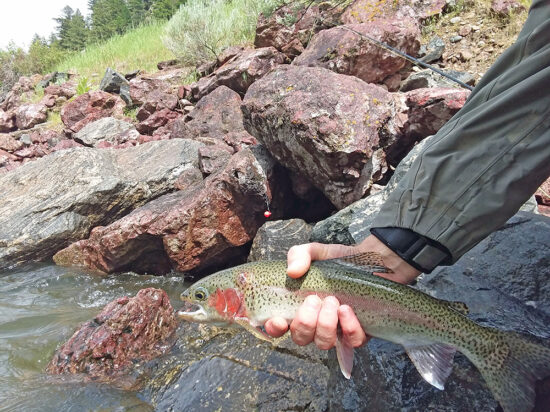
Belgrade to the Missouri River
Insect Populations on the Gallatin River
Gallatin River has a wide variety of insect hatches and fishing with dry flies, nymphing, or throwing streamers can be an effective tactic to fish the Gallatin River. In the colder months, early in the season, nymphing with stoneflies, midges, attractor flies, and a variety of other patterns are the primary methods of fishing. Midge and beatis hatches (closer to April) can provide dry fly opportunities. Gallatin has a very health caddis population and hatches start really going in May. Depending on the weather conditions and snowpack, runoff will start sometime in May and last until early-mid June. Due to high, swift, and dirty water the river is unfishable during runoff.
Spring Insect Hatches on the Gallatin
As runoff subsides Salmon fly and Golden Stonefly hatches provide exciting dry fly fishing. There are some years that runoff runs long and through the Salmon fly hatch, but the Golden Stonefly hatch is just after Salmon flies and will still be available to anglers in long runoff years. After runoff, caddis and mayflies dominate the hatches on the Gallatin with mornings being geared towards nymphing and dry fly fishing in the afternoons and evenings.
Summer into Fall Hatches on the Gallatin
Gallatin River is a Wild and Scenic River and Other Information
No matter the time of year the Gallatin River provides a beautiful and scenic fly fishing on a Montana freestone river. Walk wading will be how the river is fished as float fishing is not permitted. This does allow us to target specific water and work it harder than is possible from a boat. Some walking will be necessary and sometimes over uneven ground. During the early months until mid-July chest high waders are recommended along with good wading boots. A wading staff can be very helpful but is not required, if you think you would benefit from one though it is a good idea as the water can be swift and river bottom uneven. After mid-July the mornings can be chilly while the afternoons warm. It does not hurt to have waders for morning hours, and a change of quick drying pants for the afternoon for wet wading. For wet wading – wading socks and wading boots are recommended due to the rocks on the river bottom (wading in closed toe sandals can be done, but ankles will still be vulnerable to rocks and bruising and scratches while wading, something I have learned the hard way too many times).
Most of the Gallatin has fish averaging 12-14 inches, and the fish are generally not as picky as nearby rivers. There are a mix of fish that live in the Gallatin, browns, rainbows, cutthroat, native whitefish along with fewer numbers of brook trout and even some arctic grayling. Larger fish can be had in the upper and canyon sections with very good presentations. Come visit and do some Fly Fishing Montana’s Gallatin River
Recommend Gear for a Great Montana Experience
Rod choices can vary on the type of fishing you wish to do. A 9’ 5wt rod with WF floating line will be a good all around rod and reel combo for the Gallatin. If you have a 4wt it would be perfect for dry flies and would allow for two rods to be setup so that re-tying and rigging is unnecessary. While a 5wt will suffice for fishing streamers on the Gallatin, a 6wt or even a 9’6″ 7wt is even better when the flows are heavy. A streamside lunch will be provided along with non-alcoholic beverages. Please advise of any dietary restrictions or preferences. Other things that are necessary are polarized sunglasses, sunscreen, and a hat to block sun is highly recommended. Additionally the weather can change quickly in the Montana and especially in the mountains. Extra layers of clothing including a waterproof jacket are recommended; like your mother said, “Just in case.”
Best way to learn the Gallatin River System is to hire a Guide.
License #8533
For Booking Information Fill Out the Form Below
Outdoor Apparel for a Day or Week on the Gallatin River
Our field tested outdoor apparel is design with comfort and great outdoor graphic designs on sun protective hoodies, fish and outdoor scenic patterned leggings. A great outer layer on windy wet days is a Hydrophobic 1/4 Zip Graphic Hoodie. Take a Look at the full Line Click Here.
